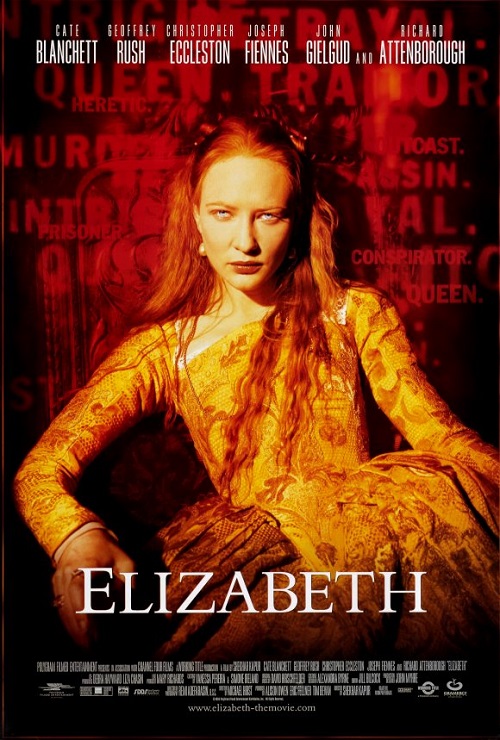 Why on earth was this nominated for Best Picture in its year? It’s glossy, and could be reasonably entertaining to someone who does not know what a travesty of history it is, but it isn’t a particularly outstanding film. The contest between Catholicism and Protestantism during the Reformation (in which both sides were relentlessly fanatical and vicious), is still played out in English film and literature to this very day. This particular film is pretty obvious in its partisanship: Protestantism (symbolized by Elizabeth) is good and Catholicism is bad. In England, there is still a kind of anti-Catholic sentiment which is played out in cartoon form in films such as this. Every cliché is there. Foreign Catholic priests skulk around in the shadows with sinister, swirling robes, and look like demons. A French nobleman is a screaming fag, mincing about. Elizabeth spouts anachronistic sentiments of selfless patriotism and “individual conscience”. Her executions and persecutions are explained away as unfortunate zeal by subordinates, or understandable reactions to treachery, or necessary steps in a grand plan to build the future glories of England (cue the Elgar marches). Essex doesn’t really mind having his head chopped off — it’s all part of true love. Mary Queen of Scots is mentioned, briefly, but there’s no follow up. Such side-taking is common enough, and there are pro-Catholic interpretations that are every bit as silly. But in this film, historical facts are so grossly misrepresented that no amount of acting or costume splendour can make it worth watching without belly laughs. Siskel & Ebert loved this film, but I don’t think they paid much attention in high school history class.
Why on earth was this nominated for Best Picture in its year? It’s glossy, and could be reasonably entertaining to someone who does not know what a travesty of history it is, but it isn’t a particularly outstanding film. The contest between Catholicism and Protestantism during the Reformation (in which both sides were relentlessly fanatical and vicious), is still played out in English film and literature to this very day. This particular film is pretty obvious in its partisanship: Protestantism (symbolized by Elizabeth) is good and Catholicism is bad. In England, there is still a kind of anti-Catholic sentiment which is played out in cartoon form in films such as this. Every cliché is there. Foreign Catholic priests skulk around in the shadows with sinister, swirling robes, and look like demons. A French nobleman is a screaming fag, mincing about. Elizabeth spouts anachronistic sentiments of selfless patriotism and “individual conscience”. Her executions and persecutions are explained away as unfortunate zeal by subordinates, or understandable reactions to treachery, or necessary steps in a grand plan to build the future glories of England (cue the Elgar marches). Essex doesn’t really mind having his head chopped off — it’s all part of true love. Mary Queen of Scots is mentioned, briefly, but there’s no follow up. Such side-taking is common enough, and there are pro-Catholic interpretations that are every bit as silly. But in this film, historical facts are so grossly misrepresented that no amount of acting or costume splendour can make it worth watching without belly laughs. Siskel & Ebert loved this film, but I don’t think they paid much attention in high school history class.
(Kapur 1998) Elizabeth
Leave a Comment
You must be logged in to post a comment.
0 Comments.